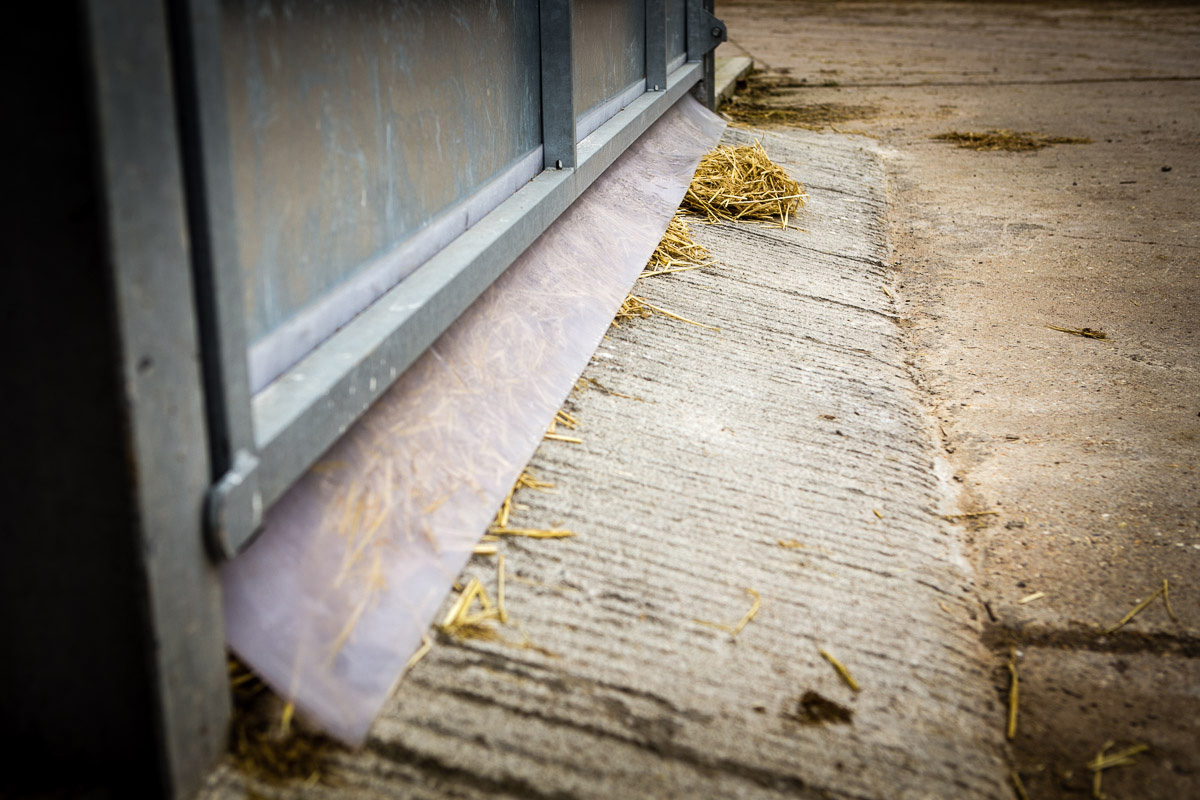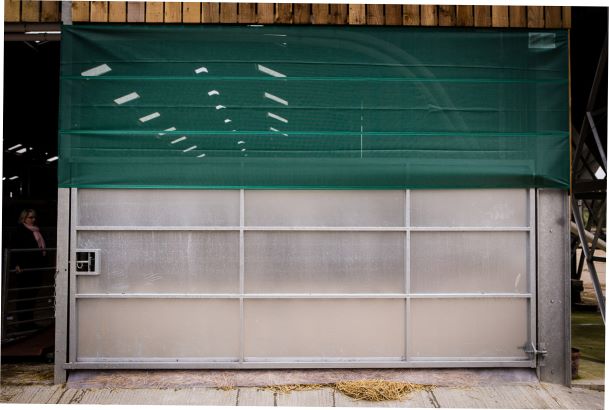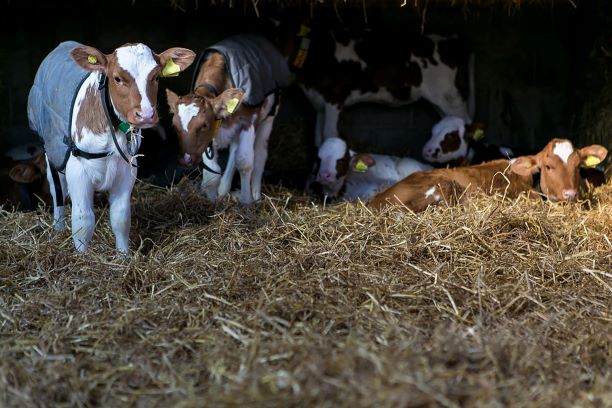- Home
- Knowledge library
- Calves in cold weather
Calves in cold weather
In cold weather, calves use more energy to keep warm. This energy is directed away from growth and the immune system, which affects growth rates.
Back to: Managing dairy calves according to weather
In cold weather, calves require more energy to keep warm, so they need enough milk and concentrate to provide them with this extra energy to maintain body temperature, grow and remain healthy. Feed is directed away from growth and the immune system to maintain warmth.
The temperature the calf feels is a combination of temperature, airspeed and humidity. Lower critical temperature (LCT) is the temperature below which a calf needs extra energy to keep warm. See the thermal comfort zone of calves below:

| Age (weight) |
Lower critical temperature °C at air speed of: |
|
| 0.2 m/s (draught-free) | 2.0 m/s | |
| Newborn (35 kg) | 9 | 17 |
| 1 month (50 kg) | 0 | 9 |
Newborn to three weeks of age
- Calves less than three weeks old are the most vulnerable to temperature changes
- The LCT for calves less than three weeks old is 10–15°C and depends on airspeed
- Feed an extra 50 g/day of milk replacer, or 0.33 litres/day of whole milk, for each 5°C temperature drop below 15°C
Calves older than three weeks of age
- The LCT for calves over three weeks old is 5–10°C and is highly dependent on airspeed
- Feed an extra 50 g of milk replacer, or 0.33 litres of whole milk, per day for each 5°C drop below 10°C
- Calves should have continual access to starter feed
Housing
To maintain desired growth rates during periods of cold weather, follow the guidance below:
- Monitor and record daily temperatures in the calf shed using a min–max thermometer located at calf height
- Dry newborn calves to reduce heat loss
- Watch out for calves shivering, or with raised hair
- Supply plenty of dry bedding material to allow the calf to nest
- Even in cold weather, calves need plenty of fresh air, but avoid draughts at calf level
- Reduce damp by providing good drainage
- In the presence of draughts or damp, calves use more energy to keep warm
- Temporary housing adaptations, such as draught excluders and windbreakers, can be an inexpensive way to protect calves


Even in cold weather, calf housing needs plenty of fresh air. Draughts must be avoided at calf level, as this table shows:
| Airspeed at calf level (m/s) | Significance |
| 0.15 | Stale air – increases bacteria survival and pneumonia |
| 0.2 | Draught-free |
| 0.3 | Draught on calf – calf will become chilled |
Bedding tips
- When nesting, the calf’s back legs should not be visible
- Dry bedding keeps jackets relatively clean and dry
- Sand, sawdust or shavings are suitable bedding choices for summer but are not good for winter because they do not provide the calf with any warmth
- Straw is the ideal bedding for winter
Feed and water
During cold weather, you may need to adjust when and how much you feed dairy calves.
- Feed more milk, or milk solids
- Use a milk replacer with a fat content of at least 18%
- Do not mix a concentration of more than 160 g of milk replacer, made up to 1 litre with water, because this will result in excessive mineral intake
- Always provide fresh water
- Think about feeding milk to calves three times a day. The interval between milk feeds should not exceed 12 hours
Calf jackets
Calf jackets, coats or blankets (as shown below) can be used to help keep calves warm, dry and healthy when temperatures fall below 15°C. Before investing in these products, make sure your calves are receiving sufficient energy and have dry bedding to keep warm.
When buying calf jackets, think about:
- Breathable material that allows moisture on the calf’s coat to evaporate
- Water-resistant or waterproof
- Machine-washable – jackets must be washed after each use to reduce the risk of disease but this needs to be at 60°C to kill bugs.
- Straps and fasteners – different types of adjustable straps and fasteners are available. Velcro will clog and need additional cleaning and maintenance. Simple, plastic clips are better. Check with the supplier that replacements are available

Calf jacket management tips
- Monitor temperatures in the calf shed daily
- Agree a protocol with the farm team to include the temperature at which calves start to experience cold stress
- Calves less than three weeks old are most vulnerable to extreme temperatures, so give them priority if temperatures fall below 15°C
- Calves older than three weeks may not need a jacket, unless the temperature is below 5°C
- Only put jackets on dry calves. Wet calves must first be dried thoroughly until they have a dry, fluffy coat
- Only use clean, dry jackets as they provide better insulation and do not trap moisture beneath them. They also reduce the spread of disease
- Be sure the jacket fits snugly so it covers the calf’s body from neck to tail
- Adjust straps weekly as the calf grows
- To preserve body heat, make sure calves have enough dry bedding to nest
- Monitor jackets for cleanliness and replace a soiled or wet jacket with a clean, dry one
- Removing jackets depends on the weather, as well as the condition and appetite of each calf
- Remove jackets in the morning
- Clean dirt from jackets with a hose or light power-wash. If necessary, pre-soak
- Wash jackets according to the manufacturer's instructions and leave to dry completely between uses
Calf jackets can potentially harbour cryptosporidium eggs. These eggs can only be destroyed if the jackets are treated with a licensed cryptosporidium disinfectant (consult data sheet for recommended contact times), then washed according to the manufacturer’s instructions and left to dry completely. Cryptosporidium eggs are only destroyed at temperatures above 60°C.
Look at our page on cryptosporidium for more information.
Monitoring calves
- Monitor growth using a weigh scale, weigh band or height stick
- Check calves at least twice a day
- Record and monitor early signs of illness: discharge from eyes or nose, cough, dirty hindquarters and scour (see page 30 for more information)
- Discuss calf health with vet
Monitoring growth in dairy calves
Useful links
Disease management in dairy calves
Monitoring growth in dairy calves
If you would like to order a hard copy of the Calf management guide, please contact publications@ahdb.org.uk or call 0247 799 0069.
Sectors:

